Microgreens are a somewhat newish type of food, with different growing methods and a variety of growing mediums. I was curious about how safe microgreens are and what factors contribute to their safety. Here is what I discovered.
So are microgreens safe to eat? Generally, they are. They are no more dangerous than other raw foods. But if grown and handled properly, they are safe to consume. Just like any other plant, they are susceptible to certain food-born pathogens such as E. coli and Salmonella. If you are concerned about eating raw microgreens, you can always cook them.
There are many ways to grow microgreens, and each method has its own advantages and disadvantages. You need to make sure you select the proper seeds that do not carry infections or chemicals. You need to choose organic and/or sterilized growing materials to further prevent infections. You also need to ensure that your microgreens get just the right amount of water, and enough air and light to prevent the growth of mold. There a lot of ways you can easily ensure the safety of your microgreens.
Why are Microgreens Safe to Eat?
Microgreens are usually eaten raw. In many ways, they are just like salad greens, just smaller. So if they are handled properly, they don’t pose any danger. Any small amounts of bacteria can be handled by a healthy immune system.
Sprouts have developed a bad reputation for causing illness and there are national and international standards for their production and distribution. Microgreens on the other hand, lack extensive research and growing guidelines to ensure their microbial safety. But the few studies out there have established that microgreens in general are safer than sprouts, because their growing environment is less encouraging for the spreading of pathogens such as E. coli.
The difference between the potential dangers of sprouts and microgreens comes from the fact that sprouts are grown in damp conditions, which encourages the growth of fungi and bacteria.
Microgreens are usually grown under controlled conditions, which reduces the risk of contamination. They need plenty of light, ventilation, warm temperatures, and moderate watering. These conditions can be provided indoors or outdoors and discourage the growth of harmful microorganisms.
In addition, the root parts of microgreens are not eaten, which reduces the risk of ingesting mold from the roots and soil. Mold usually grows on the soil and affects the roots. With proper harvesting, you can avoid contaminating the top, edible part of the microgreens. More about this later.
Just like with any other food growing and packaging, there are may ways to insure that microgreens do not carry dangerous pathogens. Here are the ways you can make sure your microgreens are safe.
How to Improve Microgreen Food Safety
1. Seed Selection and Storage
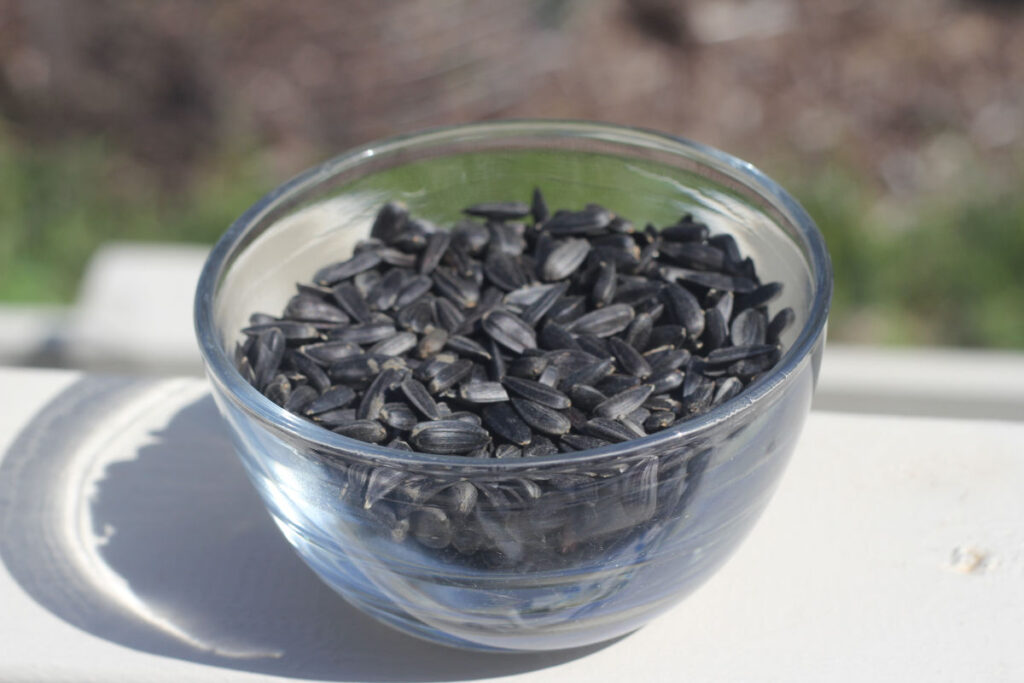
First you need to make sure you buy seeds that are specifically packaged for microgreen growing. Some commercial seeds are treated with fungicides and other chemicals which can contaminate your microgreen harvest. Always buy untreated seeds.
If you are buying seeds in large quantities, make sure to store them in a dry cool place, such as the refrigerator.
Seed sanitization is a practice used by some growers, especially for sprouting. If you are concerned about food-born pathogens in your seeds, there are several methods to sanitize seeds including a hydrogen peroxide dilution, bleach dilution, hot water, and vinegar. Here is a method that is using hydrogen peroxide to sanitize seeds.
2. Growing Medium
There are many types of growing mediums for microgreens, including potting soil, growing pads made of natural fiber such as wood, hemp, jute and coconut fiber, and synthetic growing pads. These growing pads replace the soil and use a hydroponic growing method.
While it may seem like soil has a higher potential for contamination, this is not necessarily the case. Potting soil is usually sterilized which reduces the number of organisms that can cause problems.
Using hydroponic growing mats has its potential problems as well. Most of the water in the containers will be static and not moving, which encourages the growth and spread of salmonella. The moist environment also encourages mold and other plant pathogens to grow. The damp conditions also encourage other pests. According to a recent study, hydroponically grown microgreens are more susceptible to contamination.
In addition, some synthetic growing materials, favored by growers for their ease of use, carry their own health risks. Rockwool, for example, is easy to use, but the rock dust from the fibers can get into your eyes, mouth, and lungs, whether you are the grower or the consumer.
3. Planting and Growing
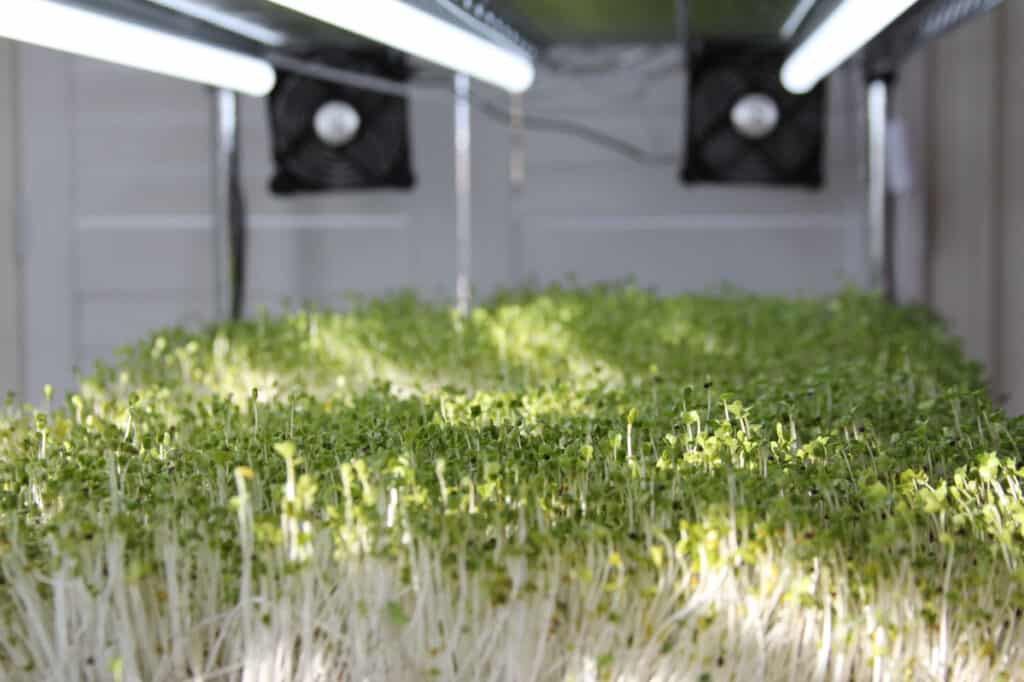
How you plant your microgreens can also make a difference in the potential proliferation of fungi and bacteria, especially mold. Microgreens are grown very densely, to maximize the growing area, and help the plants support each other stand up. Microgreens grow mostly vertically, so this make sense. But you can plant the seeds to close to each other so the plants can get too crowded, which can encourage the growth of mold. Using a seed density chart or calculator such as this one, can help you determine how much seed you need to cover a certain area.
Microgreens need regular watering but they also need well drained soil. Whether you are watering them from the top or the bottom, make sure they are not sitting in overly wet soil. Since hydroponically grown microgreens tend to sit it water, this has potential problems as I mentioned before.
Microgreens also require ventilation, whether it’s the breeze outside, or the fan you use in your growing area. Sufficient light is also important, not only for more rapid growth but also to discourage the growth of mold.
4. Harvesting and Storage
One of the reason why microgreens are generally considered safer than sprouts is because you don’t eat the roots, only the stem and the leaves. Mold grows in the soil and around the roots, so when you harvest your microgreens, take care to properly cut them above the soil level.
Here are some tips to help you accomplish this:
- Fill up your container with soil to the rim, this will make it easier to cut above the soil level.
- Use sharp scissors to harvest greens.
- Tilt your trays or growing containers sideways and place them above a bowl. When you cut the greens, they will fall into the bowl, instead of back into your growing container.
- Do not water your microgreens 8 to 12 hours before harvesting. This will reduce the chance of transmitting wet soil when you harvest, or accidentally pulling out whole plants from the soft wet soil. In addition, dry microgreens will last longer in storage.
Microgreens can last for up to a week in the refrigerator. Make sure to harvest dry microgreens and do not wash them before you put it away in the refrigerator. As you probably can guess by now, moisture will encourage the growth of microbes. You can store them in ziplock bags or reusable plastic containers with fitting lids.
Wash microgreens thoroughly just before you use them. Depending on the type you grow, you may need to remove some seed hulls. You can then pat your greens dry with a kitchen towel or paper towel.
Microgreens Not Safe to Eat
Buckwheat is the main one to avoid as it contains a toxin called fagopyrin, which can cause increased photosensitivity of your skin, as well as tickling, itching and numbing sensations of your skin.
There are several other seeds that have been implicated and are not recommended for human consumption due to mostly their high anti-nutrient content. These include alfalfa, quinoa, millet and large beans, such as fava beans. Until there is more research done on the more than 100 varieties of microgreens, it’s best to stick with the true and tried ones most people are growing, such as leafy green vegetables, herbs, sunflower seeds, and peas.
It’s important to note, that there hasn’t been a lot of studies done on microgreen food safety, only eight since 2009. This could be good or bad, we don’t know. However, following the proper growing guidelines mentioned above will greatly reduce any risk of contamination as well as produce a healthy and nutritious crop.
Related Questions
Are Microgreens Safe to Eat for Pregnant Women?
Just to be safe, it’s best if pregnant women do not eat raw microgreens. In addition, people with weak immune systems (children, the elderly and the sick) should also avoid eating raw foods, including microgreens. They can consume lightly cooked microgreens.
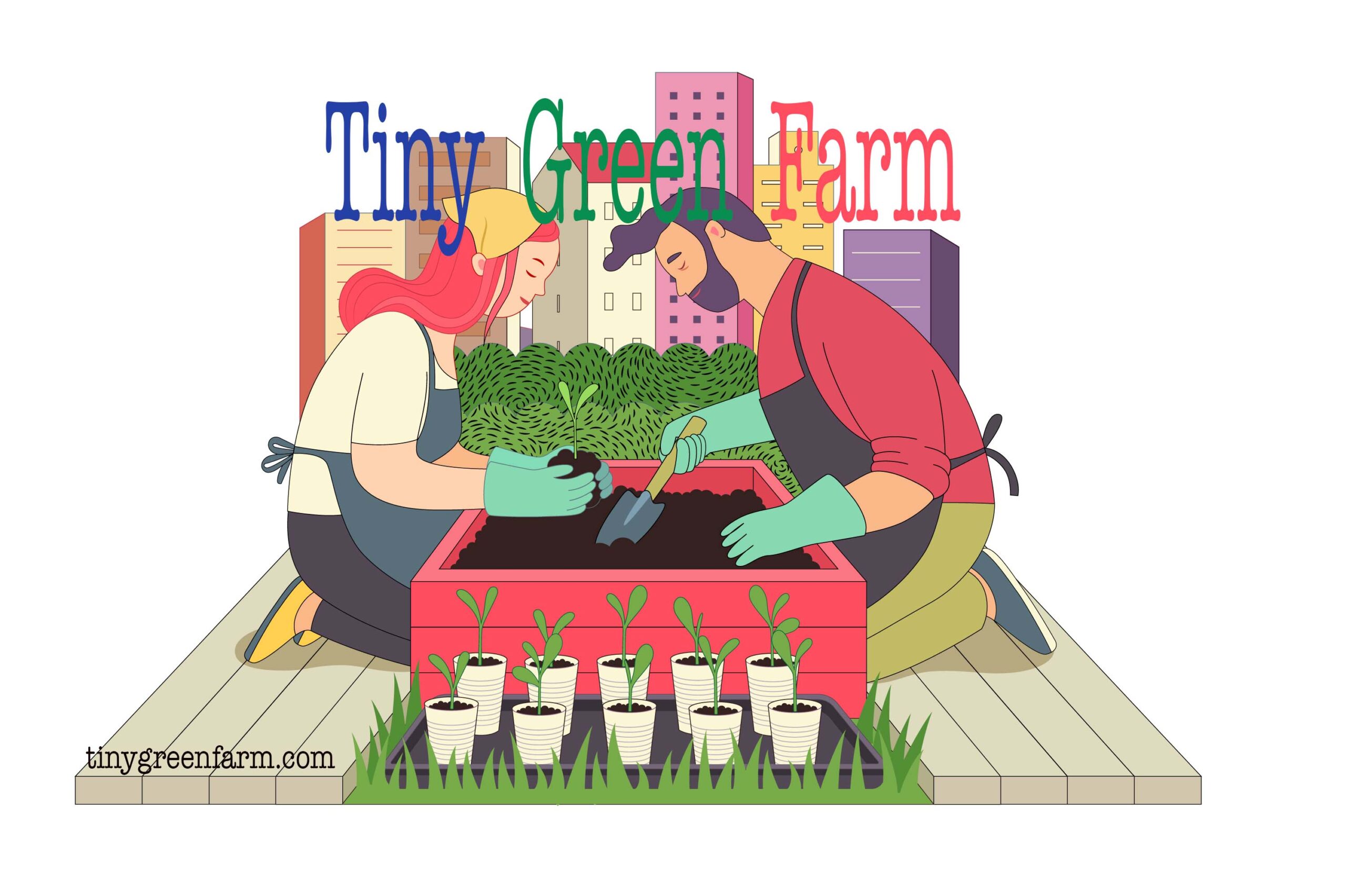
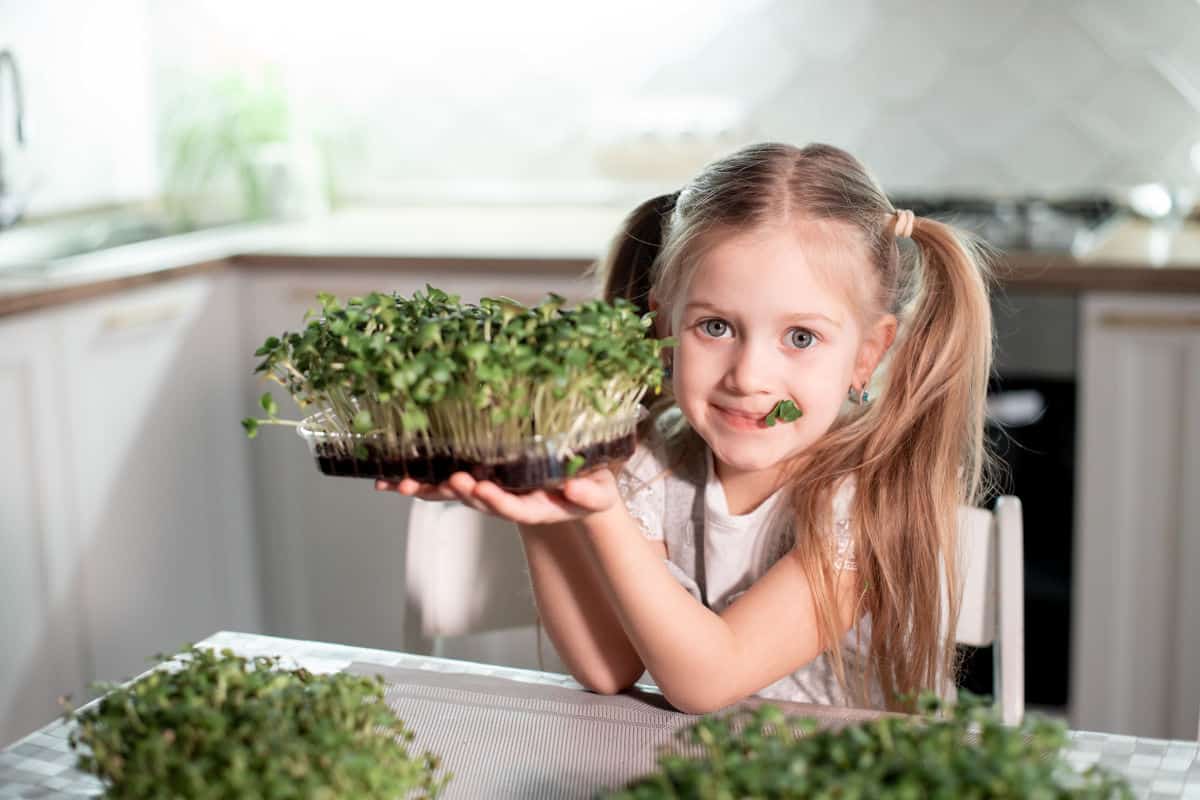
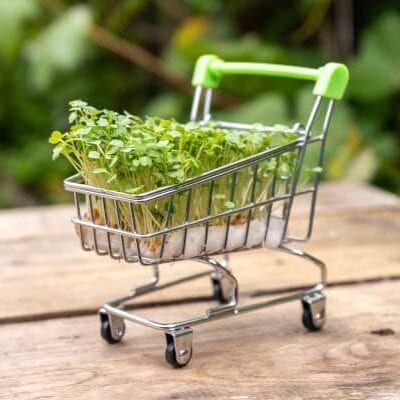
Leave a Reply